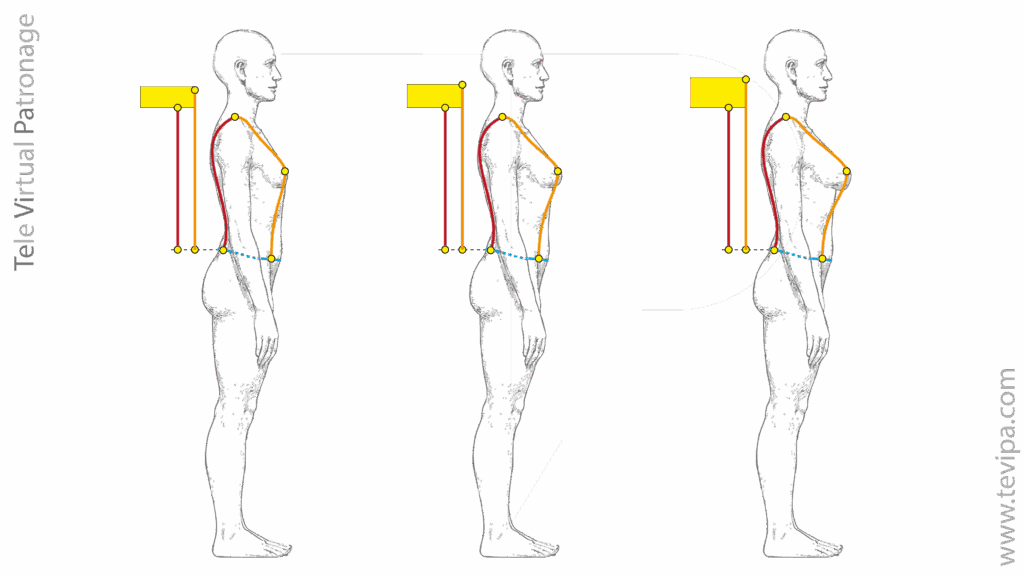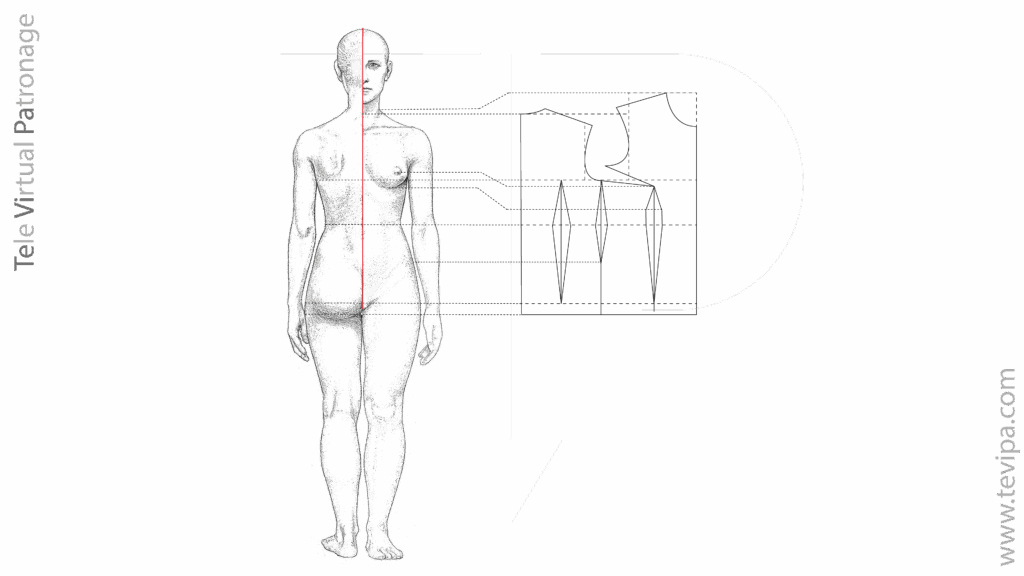Originally published on March 17, 2013

Measurements 3
Female front bust
Front bust height is one of the most important vertical measurements in women’s pattern making. Along with bust width, it helps determine the forward contour of the upper torso. A correct measurement of the front bust height is essential for shaping darts and adapting patterns to different body types.
The difference between the back bust and the front bust height defines what we call vertical bust development. While this difference is typically just 1 cm in the male body, it can vary significantly in women, depending on the bust volume and shape. This difference reflects the forward projection of the bust and should be considered when designing any women’s garment.

To calculate the vertical bust development, subtract the back bust value from the front bust height. This gives an accurate idea of how much shaping is needed in the pattern to accommodate the bust.
When measuring a woman’s front bust height, you should record three values:
- Bust drop (the vertical position of the apex point of the bust)
- Bust depth (the start of the lower curvature of the bust” o “under-bust line)
- Front waist length
These measurements help position the bust dart accurately. In lingerie and fitted clothing, the bust dart should end at the bust depth line to ensure a natural and flattering fit.

The measurement method is the same for men and women: from the 7th cervical vertebra, across the neck base and shoulder, over the nipple, and down vertically to the waist. To refine the value, subtract 1/6 of the half-bust girth or 1/8 plus 2 cm from the raw measurement.
For more details, see the article “The woman’s bust and the development of the male pattern”.
Didactic note: This text describes the proportions and measurements of the female body exclusively for technical purposes in fashion modeling and pattern making.
